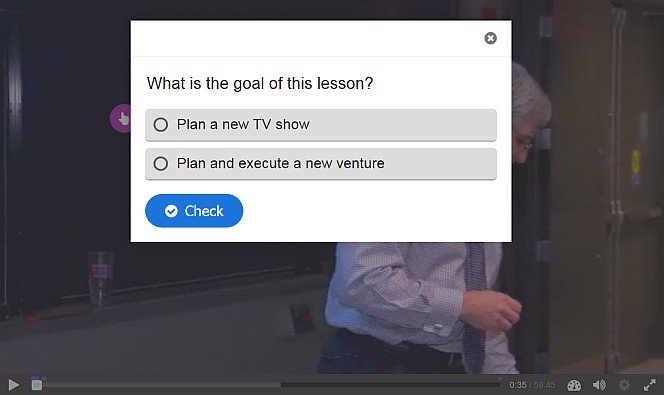Improving University Programs Online
The recent advancements in technology and the improvements in online education delivery, have made it possible to give those programs a major facelift with minimal change. Online programs of universities are usually incredibly diverse, they are filled with students of different educational backgrounds, experience levels, and aptitudes. This is why we have helped many educational institutions to add programs that prioritize practical skills, prior knowledge, and individual learning abilities with competency-based online programs.
1. Competency-Based Education
Competency-based education provides exactly what it suggests: education progress tracked by competencies. That means, rather than measure student progress by the time spent in a course, the competency-based model measures student aptitude.
General Benefits of Competency-Based Learning
- Minimal time wasted on subjects that have already been mastered or are unnecessary for the learner
- Learning is more personalized, focused, and purposeful
- Learners progress at their own pace, no longer confined to standardized time markers
- Skill-based learning allows for quicker progress for more advanced learners
- Education typically helps generate more revenue because enrollment rates are much higher due to the fact that learners get exactly what they are looking for
Benefits for online programs
When competency-based education is utilized in online programs, both universities and students stand to benefit substantially.
- Specified learning allows students to earn certifications or credentials in specific fields
- Focused learning enables quicker mastery as well as more current and applicable material
- Competencies in most professions are readily defined, which makes for easier course development
- Competency-specific modules double as refreshment courses and reminders for experienced practitioners
- Final outcome tests are powerful tools for measuring in-house applicant’s or trainee’s aptitude levels
Next Steps For Competency-Based Online Programs
As universities continue to define and build competency maps, competency-based online programs will steadily improve. However, online programs must ensure that it meets the following requirements:
- Learners must be able to absorb and apply learning
- Learning objectives must be identifiable and job-specific
- Learning must be engaging and immersive for modern learners
- Competency-based program must accurately measure prior learning and/or skills
- Learning must be current, relevant, and flexible
This is where interactive online video comes in.
2. Interactive Online Video Learning
Despite being the fastest-growing form of continuing education today, interactive online learning is still relatively new. That means that it’s still in the process of discovery. With online videos taking up about 1/3 of all internet activity, online educators are looking for the most effective ways of incorporating education into online videos. Optimal results in online video learning are found when the lessons are engaging, responsive, and, most importantly, interactive. Interactive online training often begins with a demonstration. The learner must then apply their learning into practical scenarios to demonstrate adequate understanding – all within the video content itself.
Benefits of Interactive Online Video Learning
The best way to improve the educational experience of online videos is to turn them from a passive experience into an active experience.
- Learn by practice and through the recollection of actual experience
- Learners are given real-world scenarios and situations to apply learning
- Keep learners engaged, attentive, and retentive, gauging comprehension levels on the go
- Multiple delivery methods, such as gamified, scenario-based, and/or story-based videos
- Intuitive videos enable learners to apply prior learning or to advance through completed sections
3. Competency-Based Interactive Online Learning for Universities
Though interactive online video learning for higher education is still new, the relationship between these two sides is absolutely ideal. Over time, online programs have morphed from long on-demand videos into short modular segments that are more focused and visually enhanced. These micro-lessons are often called nano courses or nano credits. With interactive online video added to these nano credits, students are able to earn credit for learning quicker and through the application of practical skills. Furthermore, time waste is drastically reduced, and the study flexibility increases tenfold.
Overall Benefits
- Education typically helps generate more revenue because enrollment rates a much higher due to the fact that learners get exactly what they are looking for
- Realistic and challenging scenarios make learning engaging and useful
- Material learned from nano credits is gained quickly and instantly applicable
- Effective for self-assessment, training, and/or mastery of a topic
- Nano courses are quick and easy to create, allowing lawyers to earn credits in newly developed areas
- Easily created and updated videos allow for the most up-to-date and relevant information
- Enables students to stay engaged while learning around very demanding schedules
- Situational-based learning and exercises helps for drafting documents, responding to real life questions, and many other scenarios
Adding interactive online training courses helps universities to drastically improve their reach online. Right at this moment, potential students can advance their skills in the areas they want, where they want, and in the order they want. With interactive online video, universities remain competitive while helping potential learners to achieve these skills in more engaging and practical ways while better retaining more applicable knowledge.
Vocalmeet’s higher education platform comes with a customizable interactive video player that creates an engaging learning experience for your members. Here are a few examples that can be used for all of the strategies outlined above:
a) Hotspots

b) Multiple Choice

c) Smart Chapters & Single Choice

d) Fill in the blanks & Slide Carousel





